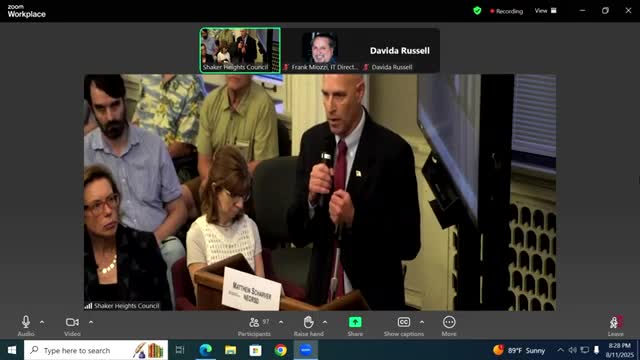Cleveland Council Plans $55M Restoration of Lower Lake Dam and University Circle Flooding Solutions
August 14, 2025 | Cleveland Heights, Cuyahoga County, Ohio
Thanks to https://workplace-ai.com/ , all articles about Ohio are free for you to enjoy throughout 2025!

This article was created by AI using a video recording of the meeting. It summarizes the key points discussed, but for full details and context, please refer to the video of the full meeting. Link to Full Meeting
The committee highlighted the need for an additional culvert in University Circle, which has been identified as a critical component in managing flooding in the area. A feasibility study conducted from 2023 to 2024 explored various alignment options for this culvert, revealing potential pathways for implementation. The Cleveland Museum of Art has emerged as a key partner in this initiative, offering a possible site for collaboration to address flooding concerns in University Circle.
Further analysis indicated that the Lower Lake Dam no longer provides significant flood control benefits. The findings showed that only one building, the Wiccan Den Building, would see improved flood service levels if the dam were reconstructed, along with a small section of Stearns Road. The estimated cost for reconstructing the dam is $43 million, with an additional $12 million needed for associated lake quality improvements, bringing the total to $55 million.
Councilman Pausch inquired about the next steps in the process, emphasizing the need for clarity on timelines and community engagement. The response outlined a comprehensive plan that includes a predesign phase lasting at least one year, followed by a detailed design phase that could take another year or more. Throughout this process, public forums will be held to ensure community input is integrated into the decision-making.
As Cleveland Heights moves forward with these critical infrastructure projects, the community can expect a thorough approach to flood management that prioritizes both safety and environmental quality. The timeline for these initiatives suggests that significant progress could be made in the next two to three years, setting the stage for a more resilient future.
Converted from Cleveland Heights Special Council Committee of the Whole August 11, 2025 meeting on August 14, 2025
Link to Full Meeting
Comments
View full meeting
This article is based on a recent meeting—watch the full video and explore the complete transcript for deeper insights into the discussion.
View full meeting
